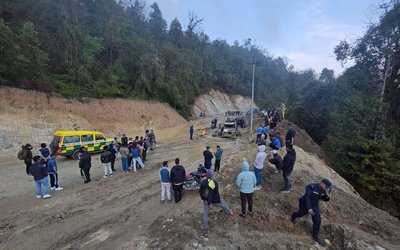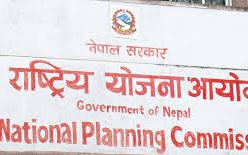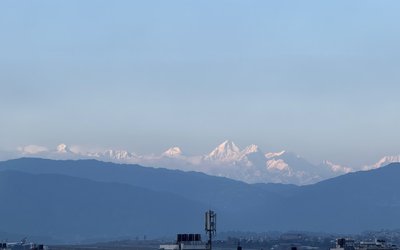
As soon as Indian Defense Minister Rajnath Singh posted a tweet about the opening of a road to Lipulek on way to the Mansarovar Pilgrimage, the atmosphere of Kathmandu heated up.
Whether it be in the ruling or opposition parties or in the civil society, there was a rush to issue statements bombarded with words denouncing India. Students affiliated to the ruling NCP jumped to streets with anti-Indian slogans and marched to the gate of the Indian Embassy with an effigy of the Indian Prime Minister.
The next day a group of retired civil servants and other experts joined in the streets with a map claiming the piece of land as belonging to Nepal. As students of the ruling party burned effigies of Indian Prime Minister Narendra Modi and their own leader K.P. Sharma Oli, parliamentarians and leaders of opposition Nepali Congress were not far behind in criticizing India.
Traditionally, only communist affiliated groups and some so-called ‘rights’ intellectuals used to have the monopoly over the dispute with India. However, Nepali Congress has also joined this street politics for the last few years.
From the streets, the agenda entered the parliament. Ruling party leaders Pushpa Kama Dahal Prachanda, Madhav Kumar Nepal and Bhim Rawal, and opposition leaders Prakash Man Singh, Dilendra Badu and others ganged up against the government.
Finally, foreign minister Pradeep Gyawali came in defense of the government and its stand on border disputes. However, this is yet to silence the agitation and opposition.
Constructed by India under its border security road project, the road was built under the notice of all Nepali authorities and politicians. Strangely, no one spoke anything about it till the inauguration.
The short-tempered chauvinist nationalist furor will damage the interest of Nepal. As in the past, the street drama ends in a fine morning with the agitators returning in a few weeks to where they were after giving up the agenda. However, these kinds of immature acts and actions can damage national interest and weaken Nepal’s diplomatic position. This kind of activity also damages the image of Nepal’s neighbor in the minds of the common people who have a different approach than the rest of the planned agitators.
Nepal’s Stand
From street to parliament and headquarters of political parties, Lipulek has emerged as a dominant agenda. Minister for Foreign Affairs Pradeep Gyawali said that the Nepal government will make official remarks on the issue of construction of the road in Kalapani Lipulek. He said that the government will take necessary steps after receiving details from the Indian side, adding that the government has always been alert about Lipulek and Kalapani issues.
Following the news on unilateral construction of a new link road by India to connect Mansarowar of Tibet, China, via Kalapani Lipulek area which Nepal claims falls under its territory, the longstanding border dispute between Nepal and India has resurfaced.
“The Government of Nepal has consistently maintained that as per the Sugauli Treaty (1816), all the territories east of Kali (Mahakali) River, including Limpiyadhura, Kalapani and Lipulek, belong to Nepal. This was reiterated by the Government of Nepal several times in the past and most recently through a diplomatic note addressed to the Government of India dated 20 November 2019 in response to the new political map issued by the latter,” said foreign minister Gyawali.
Indian Response
The Indian government has stated that the recently inaugurated road section in Pithoragarh district in the State of Uttarakhand lied completely within the territory of India.
The Indian Ministry of External Affairs said so by issuing an official spokesperson's response to media queries on the inauguration of the road on 8th May in Pithoragarh district, Uttarakhand.
The MEA's statement came with regard to the press release issued by the Ministry of Foreign Affairs (MoFA) regarding the construction and so-called inauguration by India of a 'link road' that passes through Nepal's Lipuek.
The road follows the pre-existing route used by the pilgrims of the Kailash Mansarovar Yatra. Under the present project, the same road has been made pliable for the ease and convenience of pilgrims, locals and traders, the MEA spokesperson said in the response.
Stating that India and Nepal had established a mechanism to deal with all boundary matters, the Indian government said, "The boundary delineation exercise with Nepal is ongoing. India is committed to resolving outstanding boundary issues through diplomatic dialogue and in the spirit of our close and friendly bilateral relations with Nepal."
"Both sides are also in the process of scheduling Foreign Secretary-level talks which will be held once the dates are finalized between the two sides after the two societies and governments have successfully dealt with the challenge of COVID 19 emergency," read the response.
Nepal’s Options
Given Nepal’s of own geographical situation, the country has very limited options to deal with such an agenda.
“The strategies available to countries in Nepal’s geostrategic situations are limited in number: isolation from the surrounding world to the greatest extent possible, acceptance of subordinate position to the dominant power in the region, or a delicate exercise in the balancing off of surrounding powers in order to limit their capacity to interference,” writes late Leo E. Rose in his book Nepal Profile of the Himalayan Kingdom.
Nepal exercised all three options in the past. Nepal has made an enormous national gain in accepting a subordinate position to the dominant powers in the region. Rana prime ministers used this tactic to save Nepal’s independence.
However, Nepal’s direction is nowhere now. Although Nepal has a communist majority government, it cannot go in isolation as North Korea. Given the current global political trend, a balancing act is a very difficult task.

Keshab Poudel
Poudel is the editor of New Spotlight Magazine.
- KUL MAN GHISING: Bowing Down To The People
- Apr 13, 2025
- POLITICAL VIOLENCE: Culture of Impunity
- Apr 11, 2025
- PM OLI MEETS PM MODI: No Progress
- Apr 09, 2025
- PM OLI’S THAILAND VISIT: Flip Flop
- Apr 08, 2025
- FM Dr. Deuba’s India Visit: Mission Aborted
- Mar 26, 2025















